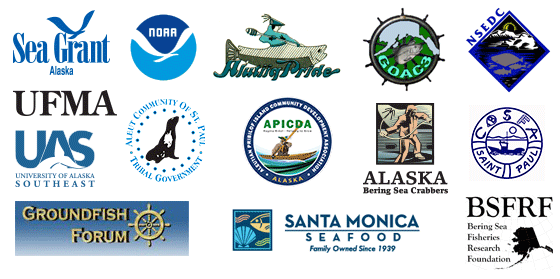AKCRRAB crabs are used to probe effects of ocean acidification
 A juvenile red king crab in its holding chamber at the start of the experiment. Photo by Chris Long. Click image for larger version [0.7 MB].
A juvenile red king crab in its holding chamber at the start of the experiment. Photo by Chris Long. Click image for larger version [0.7 MB].NOAA researchers at the Kodiak Laboratory used red king crabs from the Alutiiq Pride Shellfish Hatchery, from eastern Bering Sea broodstock, in an experiment on the effects of ocean acidification. Red king crab may be vulnerable to ocean acidification because their shells are made of calcium carbonate, which can dissolve in acidic waters. Newly settled crabs, about 2 mm long, were placed in individual holding chambers at three pH treatments: pH 8.1 (control, current oceanic conditions), pH 7.8 (expected global average by the year 2100), and pH 7.5 (expected by 2200). Researchers monitored growth and survival of the crabs for 200 days and measured calcium content in the crabs.
 Researchers at the Kodiak Laboratory measure pH and temperature in crab chambers. Photo by Chris Long. Click image for larger version [0.9 MB].
Researchers at the Kodiak Laboratory measure pH and temperature in crab chambers. Photo by Chris Long. Click image for larger version [0.9 MB].The results were not encouraging. Crabs in both pH 7.8 and pH 7.5 water died much faster than those in the control water. All the crabs in pH 7.5 water were dead within 95 days. By the end of the experiment the crabs at pH 7.8 were 38% smaller than in control water. However, at the end of the experiment the calcium content in the control and pH 7.8 crabs were not different. The reduced survival and growth at lower pH means that ocean acidification could have substantial negative effects on the populations of red king crab and crab fisheries within the next 100 years. Further research will consider daily and seasonal fluctuations in pH naturally experienced by crab throughout their life history.
The results of this experiment have been published in the peer-reviewed literature:
W.C. Long, K.M. Swiney, C. Harris, H.N. Page, and R.J. Foy. 2013. Effects of ocean acidification on juvenile red king crab (Paralithodes camtschaticus) and Tanner crab (Chionoecetes bairdi) growth, condition, calcification, and survival. PLOS ONE 8, e60959. http://dx.doi.org/10.1371/journal.pone.0060959
News Flash is edited by Asia Beder and Ginny Eckert. AKCRRAB, the Alaska King Crab Research, Rehabilitation and Biology Program, is sponsored by Alaska Sea Grant, UAF School of Fisheries and Ocean Sciences, NOAA Fisheries, the Alutiiq Pride Shellfish Hatchery, community groups, and industry members.

